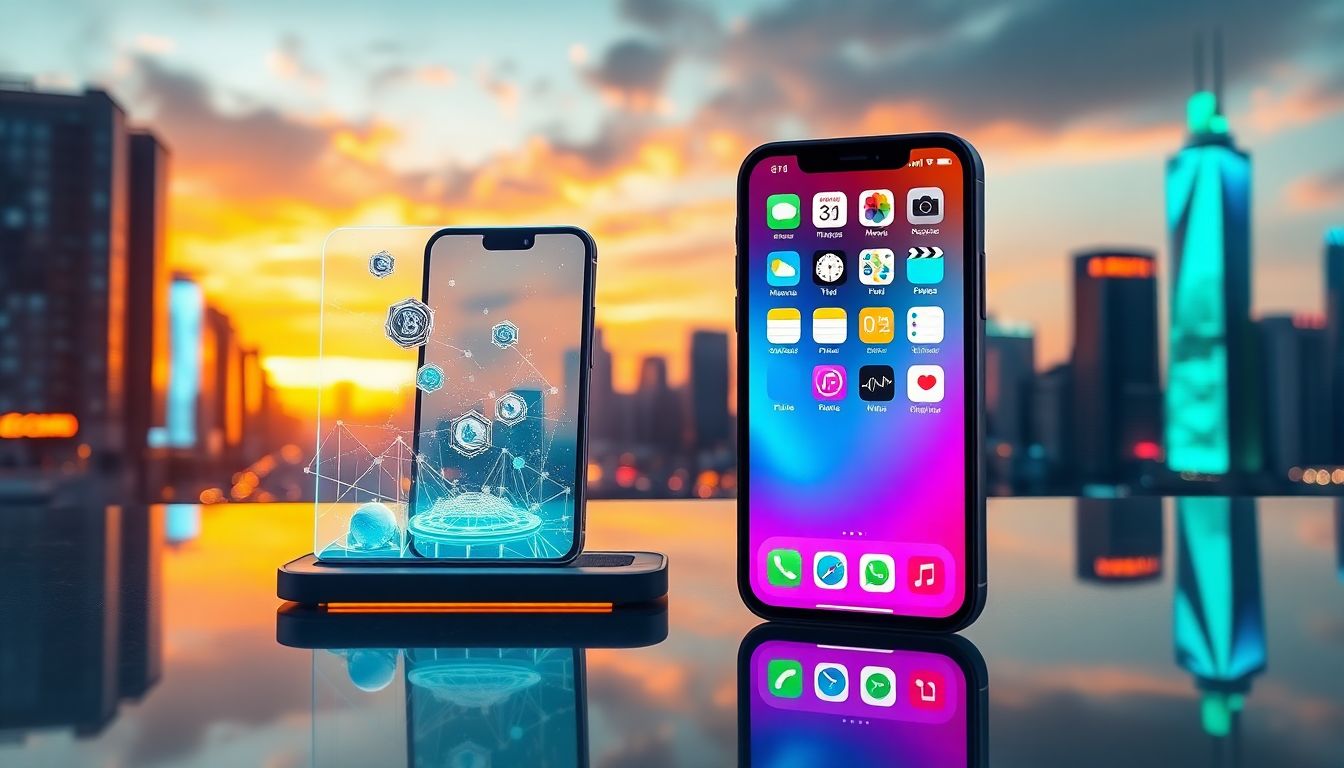
Web3 Phone vs iPhone 16 Specs: Which Device Sets the Standard for the Future of Mobile Technology?
Introduction
Smartphones keep changing faster than ever. New tech helps us stay connected and secure. In recent years, Web3 integration and powerful devices like the iPhone 16 are making waves. Comparing these two helps us see where mobile tech is headed. Whether you're into decentralization or performance, these devices reveal big trends in the industry. As tech grows, what people want from their phones also shifts. Security, speed, and new features become more important than ever.
Web3 Phone: The Next-Generation Decentralized Mobile Device
What Is a Web3 Phone?
A Web3 phone is built to put user control first. It uses blockchain technology to keep data safe. Unlike traditional smartphones, Web3 devices focus on decentralization. That means no single company controls your info or apps. With Web3 phones, you own your digital identity and assets fully.
Key Features and Innovations
- Decentralized identity management: No more dependence on big tech for login info.
- Blockchain-based security and data privacy: Your data is protected by cryptography.
- Crypto wallets and DeFi apps integration: Send, receive, and manage cryptocurrencies straight from your phone.
Leading Web3 Phone Models and Market Trends
Existing models like HTC Exodus or Sirin Labs Finney offer a glimpse of what’s possible. These devices attract crypto fans and privacy lovers. Adoption is small but growing fast, especially among tech-savvy users. Experts see a bright future where Web3 phones might become mainstream.
Benefits and Limitations
Advantages: More security, full data ownership, seamless crypto use.
Challenges: Ecosystem is still small, app options are limited, hardware isn't as refined as market leaders. These phones work great but haven't yet reached mass appeal.
iPhone 16: Apple's Flagship and Its Cutting-Edge Specifications
Overview of iPhone 16 Release and Positioning
Apple launched the iPhone 16 recently, and it quickly gained praise. It continues Apple’s focus on fast performance, sleek design, and a rich app ecosystem. Users love the refined user experience and innovative features packed inside.
Core Specifications
- Processor and performance: The A17 chip promises faster speeds and better energy efficiency.
- Display: It offers a bright, sharp OLED screen with a smooth refresh rate.
- Camera System: New sensor technology improves photo quality, especially in low light.
- Battery and Charging: Longer-lasting battery with faster charging options.
Software and Ecosystem
iOS 17 introduces new features to make your phone easier and smarter. Wide app support, plus seamless integration with Apple devices, creates a smooth experience. It also includes top privacy protections to keep user data safe.
Market Impact and Consumer Reception
The iPhone 16 has already impressed users with its speed and build quality. Many reviews praise its camera upgrades and battery life. It’s influencing competitors and setting the industry standard.
Comparing Web3 Phone and iPhone 16: Specifications Breakdown
Hardware Specifications
| Feature | Web3 Phones | iPhone 16 |
|---|---|---|
| Processor | Varies, often custom blockchain chips | A17 Bionic chip |
| RAM and Storage | Limited, but growing | Up to 1TB storage |
| Display | Smaller, blockchain-focused screens | Large, vibrant OLED display |
Web3 phones prioritize security chips and small form factors. iPhone excels in speed, display quality, and storage capacity.
Software and Ecosystem
Web3 phones run decentralized apps, favoring blockchain operations. The iPhone uses iOS, with millions of apps and services. Apple’s ecosystem is mature, while Web3 software is still developing.
Security and Privacy
Blockchain security makes Web3 devices nearly unhackable. Apple uses advanced encryption and privacy settings but still depends on central servers. Both prioritize user data but in different ways.
User Experience and Usability
Web3 phones appeal to crypto fans who want control. They might feel more complex for average users. iPhone offers a familiar, simple interface loved worldwide. Easy usability often wins for mass adoption.
Future Outlook and Industry Implications
Web3 Phone Technology Trends
Decentralization will keep improving. Expect better security, faster transactions, and more app options. We may see these phones move into mainstream markets soon.
iPhone 16 and Apple’s Innovation Trajectory
Apple’s road map hints at more AR, AI, and health features. Expect that next iPhone iteration to push the limits of speed, security, and integration.
Market Adoption and Consumer Preferences
People increasingly want privacy and control. Web3 phones fit that need perfectly, but mass-market demand depends on app compatibility and ease of use. Meanwhile, iPhone will keep dominating with trusted performance and a vast ecosystem.
Conclusion
Web3 phones and iPhone 16 stand as icons of future mobile tech. Web3 devices offer better security, decentralized control, and crypto tools. The iPhone remains the benchmark for power, ease, and app variety. Your choice depends on your goals—if you want decentralized privacy or high-speed performance. Both trends show a clearer picture of where mobile devices are heading. As technology advances, expect more innovation blending blockchain and mainstream features.
If you value privacy and decentralization, a Web3 phone could suit you better. For reliable performance and user-friendly design, the iPhone 16 continues to set the standard. Keep an eye on these devices—they’re shaping the future of mobile technology today.

0 Comments